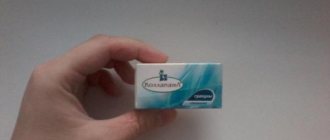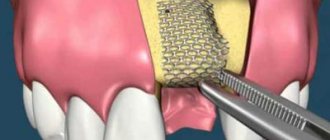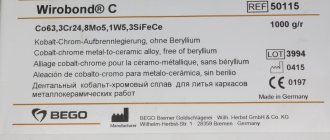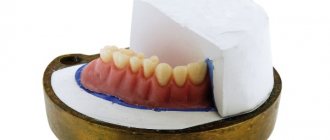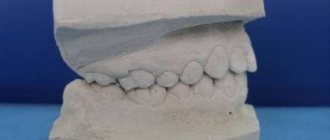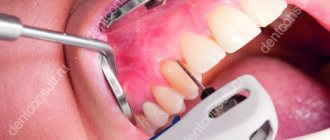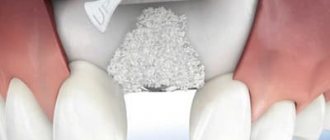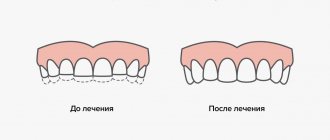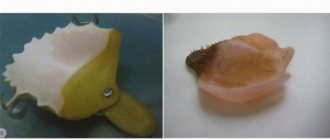Implantation, the most successful and effective method of restoring a natural smile, is constantly being improved, as is dental treatment in general. Patients are offered innovative techniques that provide better results or reduce the duration and cost of treatment. One of the major achievements in recent years has been the barrier membrane, which is installed in conditions of bone tissue deficiency.
Alveolar ridge atrophy is almost inevitable in people who require implantation. Some people delay therapy for a long time, which is why the bone has time to dissolve, while others have congenital structural features of the jaw apparatus. In any case, performing dental implantation in the event of atrophic phenomena in the bone tissue becomes impossible. Such an error threatens the following adverse consequences:
- Loosening, retraction or even loss of the implant (sometimes its loss is quite traumatic, involving the patient’s bone tissue);
- Impossibility of performing bone grafting in the future due to excessive thinning of the bone (any intervention risks fractures).
Moreover, jaw bone resorption is so seriously detrimental to the patient that even without implantation, bone grafting remains a necessary surgical procedure.
Gradually progressive atrophy leads to the fact that the face becomes asymmetrical and ugly: wrinkles worsen, the functioning of facial muscles is disrupted, and so on. The chewing function of the jaws is significantly affected, which is why patients eat poorly and have problems with the gastrointestinal tract. In advanced situations, speech and swallowing are noticeably impaired, and breathing movements are less likely to suffer. Therefore, bone grafting with additional installation of a barrier membrane must be performed immediately after the problem is detected.
Bone grafting is a solution to the problem of atrophy
For quite a long time, bone grafting has been recognized as the most effective method of restoring the width and height of the alveolar process. The technique is constantly modified and becomes safer and less traumatic. In addition, dentists are trying to achieve conditions under which simultaneous implantation will be possible.
There are several basic bone grafting techniques:
- Sinus lift. Restoration of bone volume in the upper jaw in the area of the projection of the bottom of the maxillary sinus. The operation is performed more often than others, since it is here that bone resorption is predominantly observed. The essence of the surgical intervention is that the dentist, in one of the ways (closed or open), gains access to the mucous membrane of the maxillary sinus. He disconnects part of the membrane from the periosteum, and fills the resulting cavity with prepared material of natural or synthetic origin.
- Splitting of the alveolar ridge. An effective technique for correcting the width of any jaw. First, the alveolar ridge is cut and spread apart, after which the graft is placed inside. The advantage of the technique is that the structure is immersed in the spongy tissue of the jaw, where regeneration and replenishment of the bone block is actively taking place. That is why the use of expensive osteoplastic materials is not required here.
- Guided tissue regeneration. This type of bone grafting includes two components: a graft and a collagen membrane. These two components, interacting with each other, help restore the deficit of both the width and height of the alveolar process in any part of the jaws. The technique is rarely used with simultaneous implantation.
- Bone block grafting. This technique involves the use of a natural, preferably autogenous, graft, which is placed on the area where implantation is planned and where the bone tissue has atrophied. The disadvantage of this technique is that the graft is connected to an area of the bone where there are no blood vessels. Engraftment in such conditions occurs slowly.
Patients tend to be afraid of bone grafting, since it is a full-fledged surgical intervention on the teeth. However, all manipulations are carried out under local or general anesthesia, so they do not cause any discomfort. The risk of complications with this manipulation is minimal, and the benefits are undeniable. Even if the atrophy of the alveolar process does not allow immediate implantation, and patients have to wait six months for the implants to take root, it is still better to give preference to bone grafting rather than alternative methods of tooth restoration. Moreover, in modern conditions there are many designs that increase the benefit and effectiveness of bone grafting, for example, fixation of a barrier membrane.
Use of titanium membranes for guided bone regeneration
K. N. Khabiev
PhD, certified implantologist of the European Association of Osseointegration, expert of the international research center MINEC, president of the group
The problem of restoring bone tissue around an implant immediately after its installation is one of the most pressing. The use of titanium membranes for these purposes gives good lasting results. To obtain a long-term aesthetic result, the thickness of the bone tissue around the implant, especially on the vestibular side, must be at least 1.8 mm. But, in addition to the thickness of the bone around the implant, it is also necessary to take into account the height of the bone above the implant. It should also be at least 0.5-1 mm.
Both horizontal and vertical tissue volume can be restored using titanium membranes with a special fixation system. To fix the membrane over the implant, a special flat abutment is used, which rises 1, 2, 3 mm above the implant platform.
A pre-curved titanium membrane is placed over this flat abutment and secured to the abutment with a plug or former. A feature of the I-Gen membrane is that it is pre-curved and therefore allows one to fairly accurately predict the volume of hard tissue restoration both vertically and horizontally (Fig. 1-3).
Rice. 1. The AnyRidge implant is installed in a narrow ridge. Rice. 2. The I-Gen titanium membrane is fixed with a flat abutment. Rice. 3. After 3-4 months, the horizontal and vertical volume of the bone is restored.
Clinical case
Patient G. came to the Dental Guru research clinic with complaints of a missing front tooth. The tooth was removed 2 years ago. A targeted X-ray image showed a vertical bone defect; on a tomogram, the thickness of the alveolar edge was 2.9 mm (Fig. 4). Since the vertical bone defect was cup-shaped, which means there was good potential for new bone formation, it was decided to install an implant simultaneously with bone grafting.
An AnyRidge implant with a diameter of 3.5 mm and a length of 11.5 mm was installed (Fig. 5). A mixture of allogeneic and xenogeneic osteoplastic materials was used as an osteoplastic material. The I-Gen system was used to hold the graft on the vestibular side (Fig. 6).
To do this, a flat platform 2 mm high is fixed to the implant, an I-Gen membrane is put on it, which is then fixed with a gum former. Restoring aesthetics during the healing period was performed using temporary crowns, which were fixed to adjacent teeth (Fig. 7). 1.5 months after the operation, partial exposure of the titanium membrane occurred, however, the membrane was removed only 3 months after the start of treatment (Fig. 8).
Due to the fact that after removal of the membrane a defect formed in the area where it was exposed, a month later plastic surgery was performed with a free tissue graft from the palate (Fig. 9-10). The gum profile was formed with a temporary crown on the implant (Fig. 11-14). The successful formation of soft tissue in this case is due to sufficient support from the bone, so an optimal aesthetic result was obtained.
Since, thanks to the use of I-Gen technology, not only the thickness, but also the height of the bone tissue was restored, long-term aesthetic and functional results can be predicted.
Conclusion: to obtain a good functional and aesthetic result with a long-term prognosis, it is recommended to use the technology of fixing a titanium membrane 2-3 mm above the implant platform, which allows you to obtain not only horizontal, but also vertical tissue volume.
Rice. 4. Sighting x-ray before surgery. An AnyRidge implant with a flat abutment is installed. Rice. 5. The I-Gen membrane is fixed on a flat abutment using a healing abutment. Sighting x-ray immediately after surgery. Rice. 6. Partial exposure of the membrane 1.5 months after surgery. Rice. 7. Removal of the I-Gen membrane can be performed without detaching the mucoperiosteal flap. Rice. 8. A temporary crown is fixed on the implant. Rice. 9. A free tissue graft from the palate was transplanted. Rice. 10. Immediately after transplantation and fixation of the tissue graft. Rice. 11. Condition of soft tissues 2 months after the 2nd operation. Rice. 12. Condition of soft tissues before taking impressions to make a permanent structure. Rice. 14. Sighting x-ray with a temporary crown. Rice. 14. A combined zirconium abutment and a crown on a zirconium oxide frame are fixed to the implant.
The list of references is in the editorial office.
What are barrier membranes?
The barrier membrane is one of the most modern and successful inventions in dental practice. Such designs are actively used in almost all surgical interventions. Barrier membranes for bone grafting during implantation can prevent atrophic phenomena in the alveolar process and contribute to the immediate successful fixation of artificial roots. The membrane affects the regenerative abilities of the bone, increasing them, does not allow osteoclasts that are dangerous to bone cells to enter, and minimizes the risk of penetration of pathogenic agents. Thanks to the barrier membrane, graft engraftment is accelerated, as is the overall treatment of the patient.
The membrane for bone grafting is a very thin and fairly elastic plate that is attached to the bone with titanium pins. In this way, the gums are separated from the bone material during the formation of natural jaw tissue.
Types of membranes
There are two types of barrier membranes that are widely used in dentistry:
- Resorbable. This structure gradually dissolves. It does not require separate removal, that is, additional surgical intervention, which means it causes less trauma.
- Non-resorbable. Membranes of this type do not dissolve on their own, which is why patients need an additional stage of treatment - removal of the structure. In most cases they are made of titanium. Such membranes are attached in the presence of a serious deficiency of bone tissue, filled with granules of osteogenic material. Once the alveolar bone and soft gum tissue have recovered, the barrier membrane is removed.
The dentist independently selects the optimal membrane for a specific clinical case. He must take into account that resorbable structures do not fix the grafts well enough, so they are used only for minor atrophies.
Types of dental membranes
Types of dental membranes are divided into two groups - resorbable and non-resorbable.
Non-resorbable membranes must be removed at the end of treatment, as they do not resorb. And repeated surgical intervention, which is obvious, always means repeated trauma and, as a consequence, an increased period of tissue restoration until complete healing, the risk of possible complications and inflammatory reactions, increased time and cost of dental treatment.
Resorbable membranes do not need to be removed. They completely dissolve. Accordingly, the risk of tissue trauma and treatment time are significantly reduced, the regeneration process is accelerated, and therefore the overall recovery time for the patient and the cost of dental treatment.
Why and when to install a membrane?
The barrier membrane performs several functions at once that contribute to the patient’s recovery. The design reliably fixes the osteogenic material in the place and position where the dentist installed it. Also, the membrane does not allow bone-destroying cells - osteoclasts - to pass through, which are normally responsible for the balance of metabolic processes in the alveolar process. An additional function of the membrane is protection against infection. In the case of sinus lifting, the membrane is installed under the bottom of the maxillary sinus and reduces the risk of penetration of osteoplastic material into the sinus through perforations in the mucous membrane.
Indications for use of barrier membrane:
- Preventing the resorption of bone tissue in the alveolar ridge after tooth extraction (if treatment is not performed immediately and the patient will have to remove the load from this area for some time);
- Any type of bone grafting (retention of bone grafting material);
- Dental implantation with one-stage bone grafting (reinforcing function);
- Performing flap surgical interventions for periodontitis.
Barrier membranes appeared not so long ago, and therefore their cost remains high. Dentists make decisions based on the patient's financial status and may sometimes refuse to use them. In general, the use of a barrier membrane allows for better control of the outcome of bone grafting and reduces the likelihood of adverse treatment outcomes.
Advantages and disadvantages
Collagen is considered the most suitable substance for the production of medical membranes. About 60% of the volume of protein compounds in human gum tissue consists of this material.
• Not only the substance, but also its elements after decomposition are biocompatible.
• Minimal manifestation of antigenicity allows pork collagen to be transferred to humans without consequences.
• The substance is broken down only under the influence of rare enzymes.
• Collagen membranes promote rapid wound healing and stabilize the structure of the surrounding tissue.
• The component binds damaged walls of blood vessels and capillaries, interacting directly with platelets.
The disadvantages of collagen membranes include (in rare cases):
– intolerance by the patient;
– inflammation of surrounding tissues with prolonged resorption.
Application area
The material is used for regeneration, since it is capable of activating natural recovery processes in the human body at the cellular level:
1. Tissue regeneration. Collagen membranes peel off from the repaired walls in rare cases. The therapeutic result is facilitated by:
– chemotactic fibroblast effect on the tissues surrounding the wound;
– having hemostatic properties, collagen activates hematopoietic processes, stimulates coagulation and quickly stops bleeding;
– the substance promotes the formation of cells, their migration and connection with other cells.
Collagen membranes, varied in structure, with different numbers of fibers and resorption times, cope with the regenerating function in each case. This justifies their use in dental tissue restoration.
2. Bone restoration. The 3D structure consisting of matrices, excellent biocompatibility, as well as the natural composition of collagen contribute to the restoration of solid bone fragments.
The material consists of smooth and rough sides. The first is used for rapid healing of wounds, the second is used to activate the growth of bone cells.
Collagen can be used either as a stand-alone product or in combination with the patient’s own cells.
Manufacturers
Collagen membranes are produced by companies with research laboratories and their own developments. The quality of their products meets human safety requirements.
• Collprotect. Membrane with a rough porous 3D surface. It is used for sinus lifting, for advanced intraosseous pathologies, for closing sockets after tooth extraction and perforations.
• Jason. The patented technology creates material for implantation, for closing fenestrations, for intraosseous pathologies, and for stopping bone atrophy.
• Alpha-Bio's GRAFT. The wavy two-layer material is used for sinus lifting, to correct surgical defects, for periodontal pathologies, and for ridge resorption.
How to install a barrier membrane?
The innovative method of using a barrier membrane requires certain experience from the dentist, as well as clear knowledge of the technique of performing the stage. The structure is fixed as follows:
- Performing local or general anesthesia with the addition of sedatives (the last point is not always necessary);
- An incision in the outer soft tissues of the gums and moving them away from the bone of the alveolar process;
- Replenishment of the required amount of bone tissue using one of the previously selected methods;
- Fixing a modern structure made of collagen or metal with special titanium screws to adjacent teeth or to the jaw bone itself;
- Repositioning the soft gum tissue and securing it with surgical sutures.
When using a membrane that does not dissolve, after a certain time almost all steps are repeated to remove the structure.
A prerequisite for the patient’s successful recovery is careful oral care in the postoperative period. A person must maintain personal oral hygiene and follow all recommendations of the dentist. It is also important to quit smoking a few days before surgery and for the entire rehabilitation period.
Is it possible to do without a barrier membrane?
Since fixing a barrier membrane is not cheap, many patients are interested in the question of alternatives to this design. In general, the cost of different types and brands of such dental material varies significantly. But if surgical intervention requires the use of a serious and reliable design, then it is not recommended to purchase a cheap analogue, because it still will not bring the expected result.
Performing bone grafting with fixation of barrier membranes is not available to all dental clinics. Refusal to use such structures will increase the likelihood of any complications, but in general will not affect the course of the operation and the recovery stage. But if it is possible to use a barrier membrane for bone grafting during implantation, then it is better to agree to its installation.
